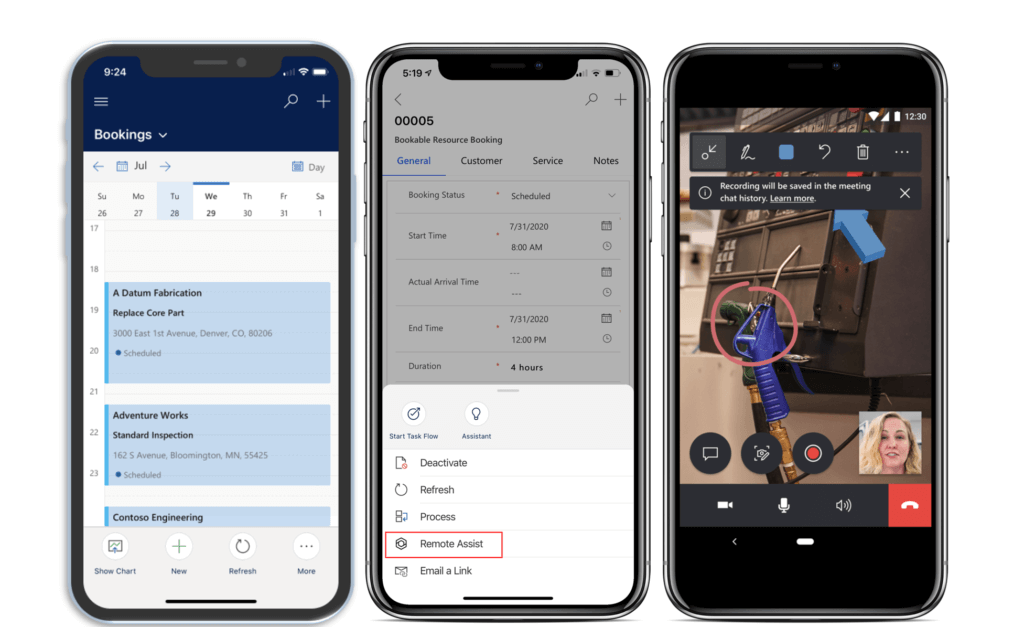Field Service Mobile App: Optimizing Efficiency and Enhancing Customer Satisfaction

In today’s fast-paced business environment, the need for efficiency and real-time communication is paramount. A field service mobile app can significantly streamline operations for companies by enabling technicians to access vital information and communicate seamlessly from the field. This technology is essential for enhancing productivity, reducing response times, and improving customer satisfaction.
With features like scheduling, dispatching, and invoicing, these apps empower field workers to perform their tasks more effectively. They can easily track service calls, manage inventory, and even collect payments on-site, which leads to a more organized workflow. The ability to access customer history and service records in real time also helps technicians resolve issues more efficiently.
Investing in a reliable field service mobile app can transform a business’s service capabilities. By adopting this technology, companies not only enhance operational efficiency but also position themselves to meet customer expectations in a competitive landscape.
Understanding Field Service Mobile Apps
Field service mobile apps enable technicians to manage tasks efficiently while on the go. Key aspects include core features designed for task management, robust integration capabilities for seamless data flow, and an intuitive user experience that supports diverse user needs.
Core Features
Field service mobile apps typically include critical functionalities such as job scheduling, real-time tracking, and work order management. Job scheduling enables dispatchers to allocate tasks efficiently, ensuring timely service. Real-time tracking provides visibility into technician locations, enhancing dispatch accuracy.
Work order management allows technicians to access job details, update status, and manage customer interactions directly from their devices. Additional features may include inventory management to monitor stock levels, customer support tools for direct communication, and reporting capabilities to analyze performance metrics. These features collectively foster increased productivity and customer satisfaction.
Integration Capabilities
Integration is essential for field service mobile apps to operate effectively within existing business ecosystems. They often support connections with Customer Relationship Management (CRM) systems, Enterprise Resource Planning (ERP) solutions, and billing systems.
Such integration facilitates the seamless exchange of data, which can enhance decision-making and improve service delivery. For instance, real-time updates from the field can sync with inventory databases, ensuring stock levels remain accurate. APIs are frequently utilized to enable these integrations, allowing businesses to tailor the app’s functionality to meet specific operational needs.
User Experience
A positive user experience is crucial for field service mobile apps, as it directly affects technician efficiency and satisfaction. A clean, intuitive interface allows users to navigate the app easily, reducing the learning curve.
Apps often employ design elements like action buttons for quick task completion and notification systems to keep users informed of urgent updates. Offline capabilities are also vital, enabling technicians to access critical information even in areas with limited connectivity.
User feedback mechanisms help developers continuously improve the app, ensuring it meets evolving user needs. A focus on user experience ultimately leads to better adoption rates and more effective service delivery.
Implementing Field Service Mobile Solutions
Implementing field service mobile solutions involves careful consideration of various factors. These include selecting an appropriate platform, ensuring customization and scalability, providing training and support, and addressing security considerations.
Choosing the Right Platform
The selection of a field service mobile platform is crucial. Organizations should evaluate both native and hybrid options to determine compatibility with existing systems. Key features to consider include scheduling, reporting, and communication tools.
A user-friendly interface enhances adoption among field technicians. Vendors should be assessed for reliability, customer support, and ongoing updates.
Potential platforms can also be compared by creating a comparison table highlighting essential features, pricing models, and user reviews. This analysis helps leaders make informed decisions aligned with their operational needs.
Customization and Scalability
Customization allows field service mobile applications to align closely with specific business requirements. Teams should identify essential workflows that need digitization and ensure the selected solution accommodates these processes.
Scalability is equally important, as businesses may expand in the future. A scalable platform allows for the addition of more users, functions, and integrations without significant overhaul.
Utilizing modular components can facilitate customization while maintaining a user-friendly experience. Reviewing case studies from similar industries can provide insights into successful custom implementations.
Training and Support
Effective training is vital for the successful implementation of mobile solutions. Organizations should create a comprehensive training program tailored to all user levels.
Support should also be readily accessible, allowing field technicians to troubleshoot issues quickly. Offering ongoing training sessions can ensure users remain comfortable with updates and new features.
Companies can utilize a mix of in-person and online training methods to suit different learning preferences. Feedback loops can be established to refine training processes based on user experiences.
Security Considerations
Security is a significant concern when implementing field service mobile apps. Organizations must prioritize data protection protocols to safeguard sensitive information.
Encryption, secure login methods, and periodic audits are essential components of a robust security strategy. Regular updates and vulnerability assessments should also be performed to mitigate risks.
Staff training on security best practices further enhances overall protection. Businesses must stay compliant with relevant regulations to avoid potential penalties or data breaches.